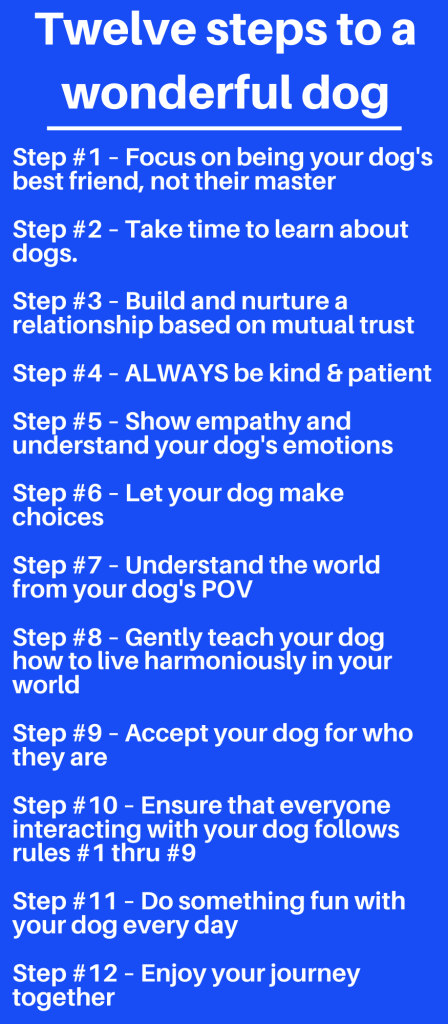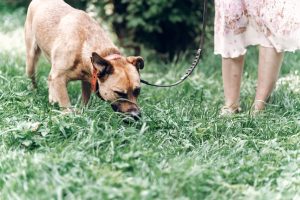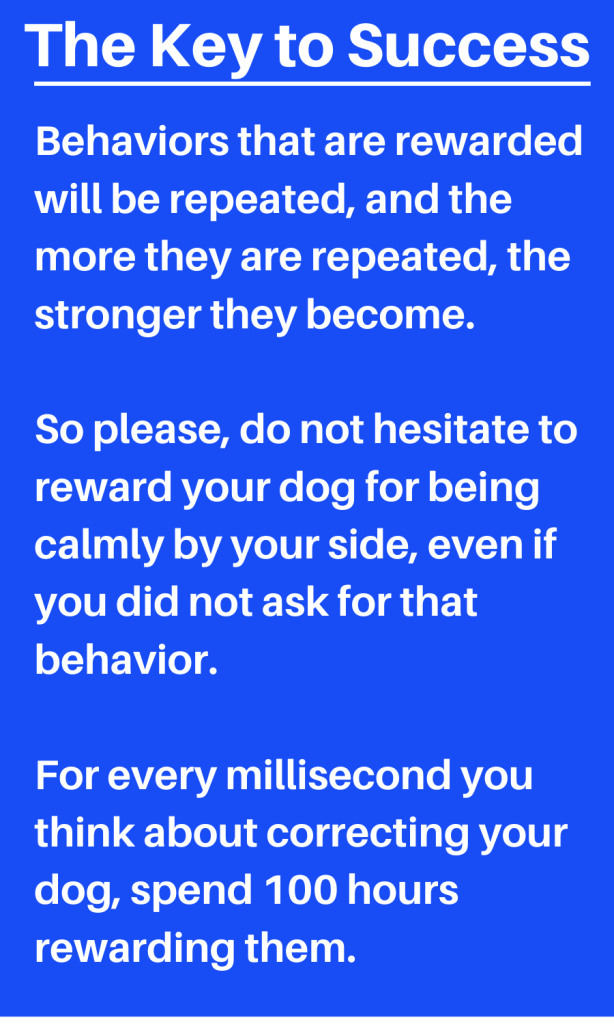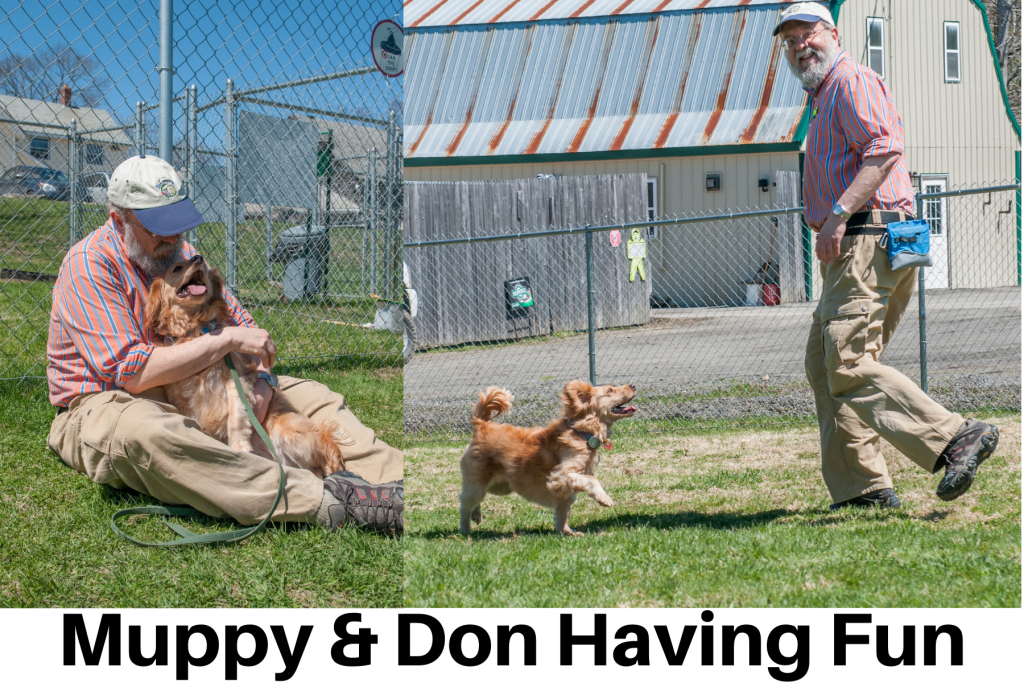 < A version of this article was published in the June and July 2022 issues of Downeast Dog News>
< A version of this article was published in the June and July 2022 issues of Downeast Dog News>
< Updated 31AUG22 >
< A short link for this page – https://bit.ly/12Steps-BestFriendsForLife >
If you have read my article, Help! My Dog is Stubborn! you already know that I believe that dogs are never stubborn but simply misunderstood. In this article, I will introduce twelve steps to help you and your dog become best friends for life, a far cry from stubborn.
Step #1 – Focus on being your dog’s best friend, not their master. Be committed to the idea that you and your dog are a team working together. Make it your goal to thrive on a life of companionship and the adventures you share, not blind, perfect obedience. Your dog will notice your positive and considerate attitude, and they will respond in kind.
not blind, perfect obedience. Your dog will notice your positive and considerate attitude, and they will respond in kind.
Step #2 – Take time to learn about dogs. Your dog is a sentient being very different than a human and far more complicated than your smartphone. To make the best of your life with your dog, you need to take time to learn about them. You need to understand their senses, how they communicate, how they interpret communication from people, the best ways to teach them, how they express emotions, what constitutes normal and abnormal behavior, and what they need to have a long and happy life. A dog training class taught under the direction of a credentialed professional dog trainer or canine behavior consultant should address all of those subjects. Meanwhile, an excellent place to start is with these two books; Dog Sense: How the New Science of Dog Behavior Can Make You A Better Friend to Your Pet by John Bradshaw and On Talking Terms With Dogs: Calming Signals by Turid Rugaas.
Step #3 – Build and nurture a relationship based on mutual trust. You cannot be a best friend or have a relationship with your dog unless you trust one  another. Trust is earned. However, it takes time and patience, especially if you have a rescue dog who may have had a rough start. While achieving your dog’s trust can take weeks, that trust can be lost instantly.
another. Trust is earned. However, it takes time and patience, especially if you have a rescue dog who may have had a rough start. While achieving your dog’s trust can take weeks, that trust can be lost instantly.
Step #4 – ALWAYS be kind and patient. Smile at your dog instead of making “frowny faces.” Speak softly and gently, not loudly and with an authoritarian tone. Handle your dog gently, and don’t grab at them. Never use force or fear to intimidate your dog; always be patient and help them learn.
Step #5 – Show empathy and understand your dog’s emotions. Dogs have a rich emotional life and experience positive emotions like joy and contentment and negative emotions like fear, grief, and anger. Help your dog through those negative moments just as they may try to help you when you feel bad. Understand that an emotional response cannot typically be “trained out” of a dog. If you need help addressing your dog’s negative emotions, seek help from your veterinarian or an accredited professional dog behavior consultant sooner rather than later.
Step #6 – Let your dog make choices. Trust your dog’s instincts and understand they will feel better when they have options like you. Be their advocate when they are out in the world. Do not allow others to force your dog to interact.
Step #7 – Understand the world from your dog’s point of view. While we share our dog’s five senses of hearing, sight, smell, taste, and touch, they prioritize them differently. For example, we might enjoy a brisk walk around the same block every day, letting our minds wander. However, most dogs will enjoy a walk that involves following their nose and making frequent stops to sniff and explore. Your dog may even choose to go in an entirely different direction at any moment. These are incompatible ways to walk, so it is our responsibility to take our preferred walk without the dog and then take the dog on a walk they will enjoy. Think of it as your dog helping you increase your daily steps.
block every day, letting our minds wander. However, most dogs will enjoy a walk that involves following their nose and making frequent stops to sniff and explore. Your dog may even choose to go in an entirely different direction at any moment. These are incompatible ways to walk, so it is our responsibility to take our preferred walk without the dog and then take the dog on a walk they will enjoy. Think of it as your dog helping you increase your daily steps.
Step #8 – Gently teach your dog how to live harmoniously in your world. When we bring a dog into our world, we are responsible for teaching them how  to live in a foreign culture. You need to start by learning their welfare needs and language. Then you need to patiently teach them by rewarding the behavior you like.
to live in a foreign culture. You need to start by learning their welfare needs and language. Then you need to patiently teach them by rewarding the behavior you like.
Behaviors that are rewarded will be repeated, and the more they are repeated, the stronger they become. So please do not hesitate to reward your dog for being calmly by your side, even if you did not ask for that behavior. For every millisecond you think about correcting your dog, spend 100 hours rewarding them. That is the key to success!
Manage your dog and its environment to prevent undesirable behavior. Understand that teaching a dog is a process and will take time. Remember, your parents spent 18+ years teaching you. It is unrealistic to expect your dog to learn everything it needs to know in a couple of months.
Training a dog also requires knowledge and skills. A credentialed professional dog trainer or canine behavior consultant can provide that knowledge and teach and coach you on those skills.
Step #9 – Accept your dog for who they are. Dogs are living, sentient beings whose personalities are just as variable as those found in people. Not all dogs are extroverts and automatically like every other person or dog on the planet. Neither do people, and that’s okay. Not every retrieving breed likes the water and retrieving, nor does every herding breed like to round up livestock. No matter what breed or mix of breeds you have in your dog, you will not always get what you want, and you need to accept your dog for the wonderful canine they are. If you need help, seek a credentialed professional dog trainer or canine behavior consultant.
you want, and you need to accept your dog for the wonderful canine they are. If you need help, seek a credentialed professional dog trainer or canine behavior consultant.
Step #10 – Ensure that everyone interacting with your dog follows rules #1 thru #9. Unless you’re a hermit with no family, many other people will interact with your dog throughout their life. That can include friends, family members of all ages, co-workers, neighbors, and a wide variety of pet care professionals such as veterinarians, daycare and boarding facilities, groomers, pet sitters, dog walkers, dog trainers, and behavior consultants. You must help all these people understand and accept rules 1 through 9. If other people are not kind to your dog, it can negatively affect your dog’s behavior around other people. Remember, your dog cannot always stand up for themselves; that is up to you.
Step #11 – Do something fun with your dog every day. Often, the strongest relationships involve two parties doing something together that they both enjoy.  Find that special something you and your dog love doing together, and then make the time to do it daily. Don’t overthink this. There can be more than one thing you both love, and sometimes it can be as simple as your dog sitting in your lap snuggling while you read or watch your favorite show on TV. Activities like going for walks [ as long as you allow your dog to sniff and explore], playing fetch [ in moderation ], going for car rides, or just dancing in the backyard all count. The important thing is finding those activities and making time for them. If you do, you and your dog will benefit and strengthen your bond.
Find that special something you and your dog love doing together, and then make the time to do it daily. Don’t overthink this. There can be more than one thing you both love, and sometimes it can be as simple as your dog sitting in your lap snuggling while you read or watch your favorite show on TV. Activities like going for walks [ as long as you allow your dog to sniff and explore], playing fetch [ in moderation ], going for car rides, or just dancing in the backyard all count. The important thing is finding those activities and making time for them. If you do, you and your dog will benefit and strengthen your bond.
Step #12 – Enjoy your journey together. The saddest part of sharing your life with a dog is that that journey ends too soon. So instead of striving for perfection, focus on the joy you feel when together. Commit to making every moment count so that when the journey ends, you can both say, “Thank you for this wonderful time together! I’ll miss you until we are reunited on the other side!”
I hope that I have convinced you that your dog is not stubborn and to give my program a try. From personal experience and feedback from my clients, I know that it will help you and your dog become best friends for life.
________________________________________________________________________
Don Hanson lives in Bangor, Maine, where he is the co-owner of the Green Acres Kennel Shop ( greenacreskennel.com ) and the founder of ForceFreePets.com, an  online educational resource for people with dogs and cats. He is a Professional Canine Behavior Consultant (PCBC-A) accredited by the Pet Professional Accreditation Board (PPAB) and a Bach Foundation Registered Animal Practitioner (BFRAP). Don is a member of the Pet Professional Guild (PPG), serving on the Board of Directors and Steering Committee and chairing the Advocacy Division. He is also a founding director of Pet Advocacy International (PIAI). In addition, Don produces and co-hosts The Woof Meow Show podcast, available at http://bit.ly/WfMwPodcasts/, the Apple Podcast app, and Don’s blog: www.words-woofs-meows.com. The opinions in this article are those of Don Hanson.
online educational resource for people with dogs and cats. He is a Professional Canine Behavior Consultant (PCBC-A) accredited by the Pet Professional Accreditation Board (PPAB) and a Bach Foundation Registered Animal Practitioner (BFRAP). Don is a member of the Pet Professional Guild (PPG), serving on the Board of Directors and Steering Committee and chairing the Advocacy Division. He is also a founding director of Pet Advocacy International (PIAI). In addition, Don produces and co-hosts The Woof Meow Show podcast, available at http://bit.ly/WfMwPodcasts/, the Apple Podcast app, and Don’s blog: www.words-woofs-meows.com. The opinions in this article are those of Don Hanson.
©31AUG22, Donald J. Hanson, All Rights Reserved
< Click for Copyright and Use Policy >